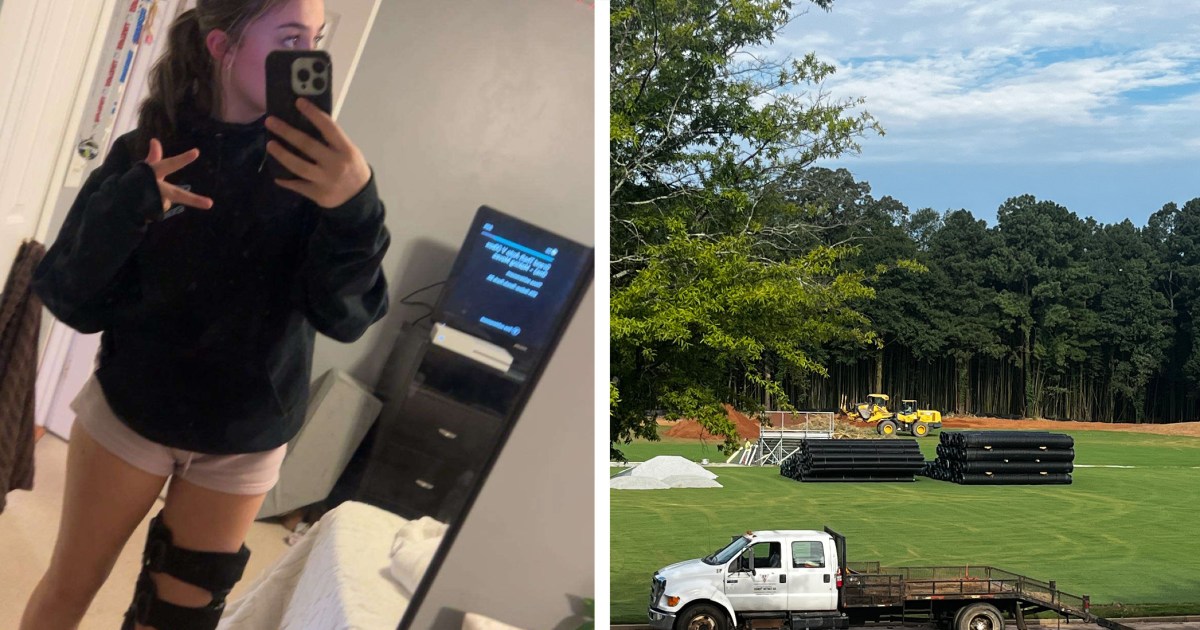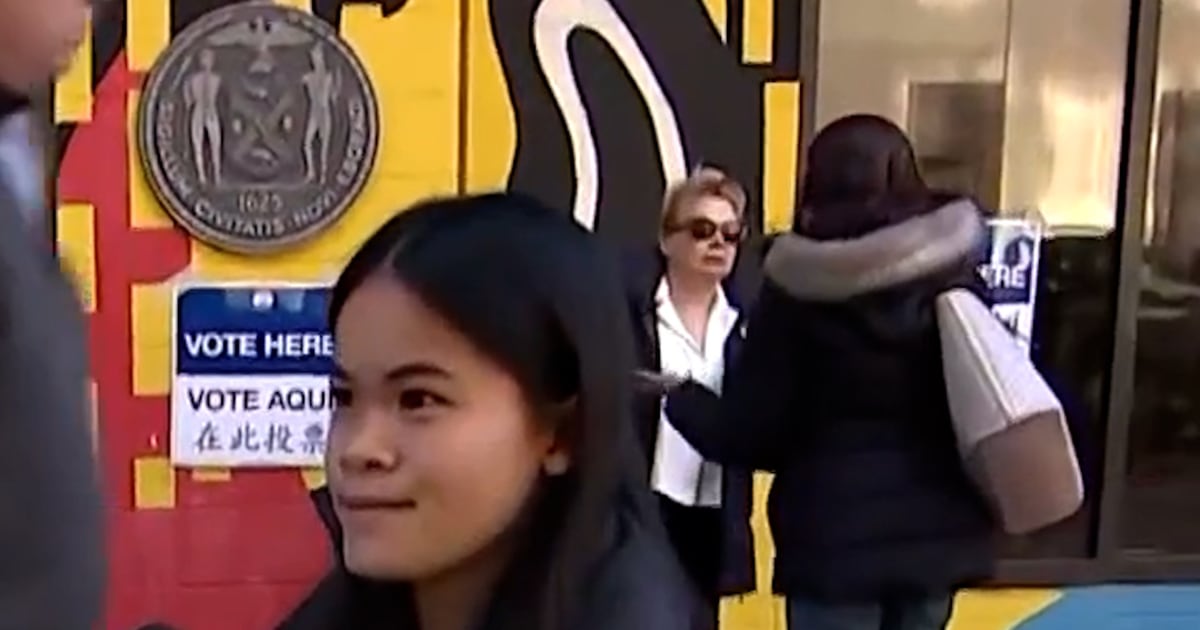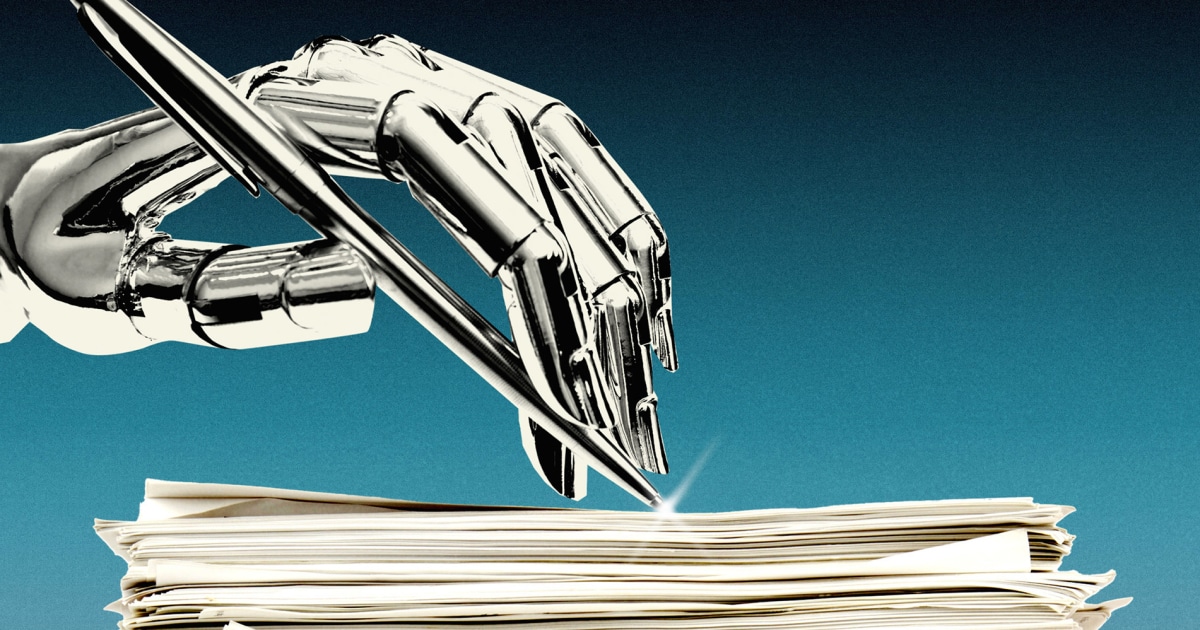The artificial turf industry convinced local governments and school boards that switching from grass to turf could save money and expand playing time for youth sports.
Source link
Oct. 12, 2025, 6:00 AM EDTBy Jon-David RegisNatalie Silva, a high school senior in Massachusetts, wants to play soccer in college, but she is still recovering from a right knee injury during a game over a year ago.Silva remembers colliding with an opposing player. As she fell, she heard her knee “pop” when her cleats got stuck in the turf on a field where her Uxbridge High School team was playing an away game.“I was playing on an indoor field where the turf is on top of concrete. If it was grass, there would’ve been more cushion,” claims Silva, 18, who goes to school about 50 miles southwest of Boston. She said she met with her doctor, who was concerned that her cleats were made for playing on grass, not turf. “The turf 100% played a role in my injury,” Silva said.The multibillion-dollar artificial turf industry has convinced local governments and school boards that turf fields are a way to save money and increase playing time for young people. As hundreds of synthetic fields and playgrounds are installed at schools, colleges, and public parks in the U.S. every year, stakeholders from lawmakers to school boards and soccer moms are debating claims like Silva’s about the safety of playing on such surfaces.Boston and Westport, Connecticut, have effectively banned turf that contains rubber from recycled tires due to concerns about exposure to chemicals. Vermont has passed restrictions, and in California, a reversal of a previous decision now allows local communities to impose bans. Groups like the NFL Players Association, and physical therapists and other clinicians believe playing on turf increases the risk of torn ligaments, sprained ankles, and other injuries.A study of NFL data released in 2024 found higher incidences of lower-extremity injuries on artificial turf than on natural grass. The odds of a serious injury requiring season-ending surgery were significantly higher, the study said. “ACL and ankle sprains are the main injuries we see from turf,” said HIDEF Physical Therapy founder Zach Smith, who works with athletes in Seattle as they recover from turf-related injuries.“The turf provides better grip and more friction,” he said. “Great for performance, but bad for joints.”Safety debate mountsArtificial turf — first widely introduced in the 1960s at the former domed stadium of Major League Baseball’s Houston Astros — is made from plastics to mimic the look of grass. It typically contains tiny black pellets called “crumb rubber,” processed using shredded tires.By 2020, there were 13,000 synthetic turf sports fields in the U.S., with about 1,500 installed annually, according to the National Recreation and Park Association. Nowadays, young people who participate in sports, from football to field hockey and lacrosse to soccer, are less likely to play on natural grass than on artificial turf, also called synthetic grass, synthetic turf, or astroturf.Python Park, a 12-acre playing field in Avondale Estates, Georgia, belongs to the Paideia School. Paideia is changing its fields from grass to turf. Sam Whitehead / KFF Health NewsThe Synthetic Turf Council, a leading industry trade group, did not return calls and emails to answer questions about chemical hazards and injuries. But the industry has pointed to research showing no definitive link between artificial turf and health problems, including sports injuries.Manufacturers support their product.“Artificial turf lets kids play safely on a lush, mud-free surface all year long,” said Adam Grossman, chief executive of Southern Turf Co., headquartered in Austin, Texas.“No fertilizers, pesticides, or watering required,” said Grossman, adding that his company’s products are “nontoxic.”Brad Blastick, president of Lazy Grass Co. in Alpharetta, Georgia, said his company’s products feature “built-in cushioning, helping to reduce injuries and keep kids active and safe.”In a January letter to protest a Santa Clara County, California, proposal to ban artificial turf, the president and CEO of the Synthetic Turf Council, Melanie Taylor, said “forever chemicals are ubiquitous in today’s environment, including water, air, soil, and a variety of food products.”Synthetic turf does not contain more than what’s in other parts of the environment, and it helps communities across the country save money, Taylor said in the letter. “Motions to ban synthetic turf hinder communities’ ability to access these benefits [and] should be reconsidered,” she wrote.Long-term consequencesCritics of turf dispute the industry’s claims, including those about safety.The pellets of crumb rubber in turf contain toxic chemicals like petroleum compounds, metals, and lead, according to Stuart Shalat, former director of the Division of Environmental Health at Georgia State University.“When fields heat up, they can release fumes or transfer chemicals to skin,” said Shalat, who is now retired. “And we don’t yet fully understand the long-term effects, especially for children.”The Paideia School, a K-12 private school in Atlanta, is switching from grass to turf at Python Park, its off-campus location in Avondale Estates that has two soccer fields and a diamond for baseball and softball.Janet Metzger, a self-described environmentalist who lives near Python Park, said she tried to persuade the school to cancel the project because she is worried about the impact on nature.“When there’s natural grass, you have insects and life in the soil that keep the area vibrant,” Metzger said. “Turf kills the environment and harms all the species that live there.”The Paideia School declined an interview request to answer questions about why it is installing turf.In instituting their restriction on turf fields, government officials in California and Vermont said they were worried about PFAS, which are known as “forever chemicals,” and other hazardous materials that can be inhaled or absorbed through the skin. A 2024 federal Environmental Protection Agency report on the crumb rubber in turf found that chemicals associated with tire crumb rubber were in the air, on surfaces, and on the skin of study participants but concluded there were no elevated levels in their bodies. EPA researchers, however, said their study was not designed to assess health risks associated with crumb rubber.Meanwhile, the U.S. Consumer Protection Agency has issued recommendations for limiting exposure to crumb rubber recycled tire materials used in playground surfaces, encouraging people to wash their hands and other exposed skin after leaving playgrounds with these surfaces, and to avoid eating and drinking while there.This year is shaping up to become one of the hottest on record. Turf absorbs heat from the sun and can become much hotter than natural grass, creating a health hazard, according to the Center for Environmental Health.“On turf, you get more blisters, turf toe, and turf burns. I’m playing recreational soccer now and dealing with blisters myself,” said Smith, the Seattle physical therapist who specializes in orthopedic injuries and rehabilitation. “Turf gets hot, and when you add sweat and heat, it becomes a dangerous combination.”Brian Feeley, an orthopedic surgeon at the University of California-San Francisco, said his studies show ACL and Achilles tendon injuries are more likely on turf and more likely to require surgery.“Artificial turf doesn’t release cleats as easily,” he said. “That puts more torque and strain on the knees and ankles.”And Feeley said the long-term consequences can be severe: “An ACL injury as a young athlete can keep you from playing at the next level and lead to arthritis in your 30s.”Natalie Silva is still recovering from a torn anterior cruciate ligament injury in her right knee that she says happened in February 2024 during a high school soccer game played on a turf field.Natalie SilvaSilva, the injured high school soccer player, said she wishes her games had been played on natural grass. The Uxbridge High School principal’s office and athletic department declined multiple requests to comment.She vividly recalls the match in February 2024 when she tore the anterior cruciate ligament in her right knee.“I went up to head the ball and landed awkwardly on my right leg,” she said. “The goalie ran into me at full speed, and my knee popped. I immediately fell to the floor in agony. Every bump in the car ride home made my leg jerk — it felt detached.”Before the injury, Silva said, she had hoped to play soccer in college. Now, she is struggling through rehabilitation three times a week and can’t play for a full year.Asked about her future in soccer, Silva said she doesn’t know what to expect. Right now, she’s just trying to enjoy senior year.“The mental side of it is the worst,” Silva said. “The feeling of one day being able to do everything and the next you can’t walk or even move your leg. The mental aspect of it lasts longer than the pain.”Jon-David RegisJon-David Regis is a contributor to KFF Health News. Fred Clasen-Kelly contributed.




